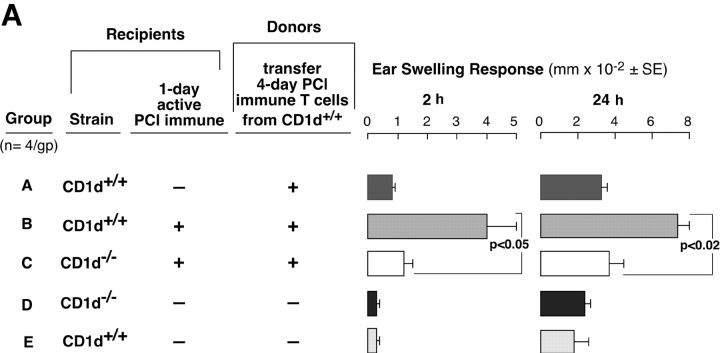Figure 6.
4-d immune WT T cells fail to transfer CS to 1-d immune NKT cell–deficient mice. (A) CD1d−/− mice (Group C) and CD1d+/+ WT controls (Group B) were skin sensitized and 1 d later received 4-d PCl immune-isolated T cells from WT CD1d+/+ mice and then were ear challenged 1 d later. The T cells were obtained by treating WT immune cells with anti-CD19 plus complement. Nonimmune CD1d+/+ mice (Group A) similarly received T cell transfers and were ear challenged. Nonimmune CD1d−/− (Group D) and CD1d+/+ mice (Group E) were challenged but received no transfers. (B) Jα18−/− mice (Group C) and BALB/c WT controls (Group B) were contact sensitized and 1 d later received 4-d PCl immune–isolated T cells from BALB/c mice and then were ear challenged 1-d later. The T cells (99% TCRβ+) were obtained by magnetic separation. Nonimmune BALB/c mice (Group A) similarly received T cell transfers and were ear challenged. Nonimmune Jα18−/− (Group D) and BALB/c mice (Group E) were challenged but received no transfers. In A and B, the ear responses were measured at 2 and 24 h from a representative experiment with four mice per group.


